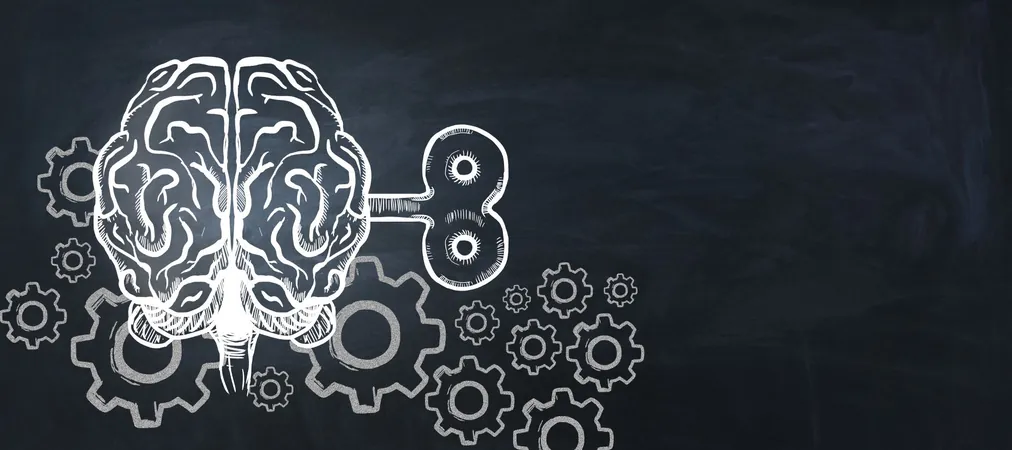
New Prosthetic Technology Gives Amputees a Second Chance at Life!
2024-10-28
Author: John Tan
Introduction to New Prosthetic Technology
A groundbreaking shift in prosthetic technology is changing the lives of amputees across the globe. One inspiring example comes from Singapore, where 53-year-old Tan Ter Cheah bravely navigates her daily life despite a prosthetic foot due to a childhood battle with cancer.
Tan's Journey with Prosthetics
When she was just seven years old, Tan underwent amputation of her leg due to synovial sarcoma, a rare and aggressive form of soft-tissue cancer. Over the years, she has experienced the evolution of prosthetics firsthand. Her initial prosthetic, created by a deaf-mute technician fondly referred to as Uncle Ah Ju, was rudimentary and uncomfortable—a hard socket held together by a leather strap. "I hated it. It felt like a dog collar," she recalls.
Advancements in Prosthetic Technology
In stark contrast, today's prosthetics are a feat of engineering and design. Tan's current leg includes a silicone sock and a soft plastic socket, significantly improving comfort and function. The design even allows her to adjust her ankle joint for various shoe heel heights. These advancements emphasize how far technology has come, offering amputees like Tan a chance to regain their mobility and independence.
Market Trends in Prosthetics
The demand for advanced prosthetics is particularly notable in the Asia Pacific region, where healthcare spending is on the rise. Market research firm Coherent MI predicts that the market for robotic prosthetics will be the fastest growing, with an annual growth rate of over 9.9% between 2023 and 2030.
Personalized Prosthetic Design
At the forefront of this innovation is the Foot Care and Limb Design Centre at Tan Tock Seng Hospital in Singapore. Prosthetist Trevor Binedell specializes in crafting personalized prosthetic limbs, taking great care to ensure they fit each patient's unique biomechanics. The process has evolved to include digital scans of patients' stumps to create better-fitting sockets.
Emerging Functionalities
Prosthetic technology is not only evolving in terms of comfort but also functionality. Robotic limbs equipped with microprocessors can adjust in real-time, providing a more natural walking experience. Patients can even access their data via an app, allowing easy updates to their prosthetic device.
Innovations in Prosthetic Hands
Moving beyond legs, the creation of prosthetic hands has also seen remarkable transformations. Today's myoelectric arms can respond to muscle signals, offering multiple gripping patterns. These technological upgrades provide users with innovative solutions for everyday tasks. However, there is a debate in the industry: some companies are urged to focus on practicality rather than overselling complex features.
The Future of Neuroprosthetics
Notably, as advancements continue, some researchers are exploring neuroprosthetics, which aim to decode brain signals for more seamless control of prosthetic limbs. This involves using AI and microelectrodes implanted in nerve fibers, making it possible for amputees to control their prosthetics intuitively through thought alone.
Challenges and Costs
However, cost remains a persistent challenge; prosthetic limbs can range from $1,500 to a staggering $100,000. While 3D printing is celebrated for its potential to lower costs, experts like Binedell caution that it may not yet provide the quality and comfort that traditional craftsmanship can achieve. Nevertheless, some promising projects are exploring 3D printing methods that could revolutionize accessibility in the future.
The Path Forward
As the industry moves forward, balancing innovation with the immediate needs of amputees will be crucial. Binedell aptly sums up the goal: "What they need is the best leg for them, and it's our job to work out what that is."
Conclusion
In this new technological era, the lives of amputees are transforming for the better, providing hope, independence, and the ability to step outside with confidence once again. The story of individuals like Tan Ter Cheah is just the beginning in a world where technology continuously opens new paths to recovery and reintegration.



 Brasil (PT)
Brasil (PT)
 Canada (EN)
Canada (EN)
 Chile (ES)
Chile (ES)
 España (ES)
España (ES)
 France (FR)
France (FR)
 Hong Kong (EN)
Hong Kong (EN)
 Italia (IT)
Italia (IT)
 日本 (JA)
日本 (JA)
 Magyarország (HU)
Magyarország (HU)
 Norge (NO)
Norge (NO)
 Polska (PL)
Polska (PL)
 Schweiz (DE)
Schweiz (DE)
 Singapore (EN)
Singapore (EN)
 Sverige (SV)
Sverige (SV)
 Suomi (FI)
Suomi (FI)
 Türkiye (TR)
Türkiye (TR)